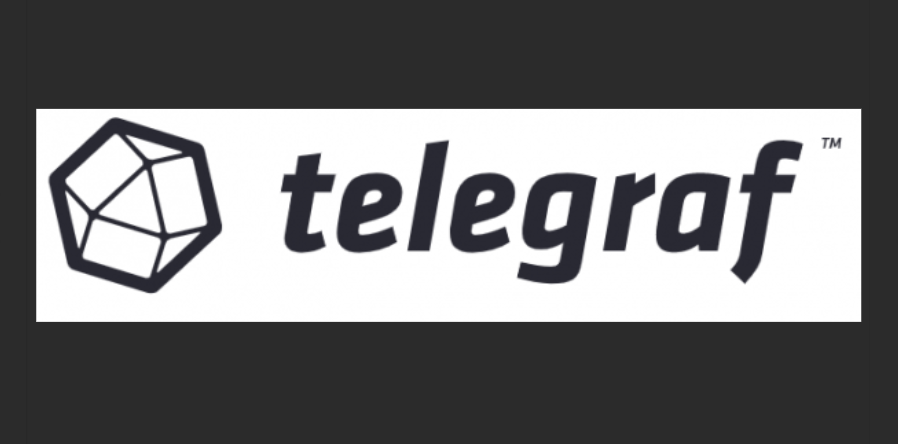在当今的工业物联网(IIoT)环境中,从各种设备收集、处理和转发数据是一项关键任务。本文将详细介绍如何使用Telegraf这一强大的数据收集工具,从多种通信协议的IoT设备中收集数据,并将其发送到InfluxDB等数据存储系统。
Telegraf简介
Telegraf是一个开源的数据收集代理,它能够从各种资源聚合数据,使用不同的通信协议,在处理阶段转换传入数据,生成聚合指标,并将处理后的数据转发给数据消费者。其工作原理类似于提取-转换-加载(ETL)过程。
Telegraf的主要优势包括:
- 支持广泛的设备资源集成插件
- 开源特性
- 灵活的插件系统(使用Go语言实现)
- 可扩展性强,可创建自定义插件

物联网用例定义
在我们的示例中,我们将模拟一个工业物联网环境,包含以下设备:
- SNMP设备(通过SNMP协议通信)
- HTTP设备(通过REST API通信)
- MQTT设备(通过发布/订阅模式通信)
- OPC UA设备(通过工业标准OPC UA协议通信)
这些设备将生成随机数据,Telegraf将作为桥梁接收所有这些数据,进行转换,并将其发送到InfluxDB进行存储和可视化,同时还可以转发到Kafka等其他工具。

创建基础Telegraf环境
首先,我们需要设置一个基础环境,包括Telegraf和InfluxDB,使用Docker Compose进行管理。
telegraf.conf配置文件
# Agent Configuration
[agent]
## Default data collection interval for all inputs
interval = "10s"
# Input Plugins
[[inputs.cpu]]
## no configuration options required
[[inputs.mem]]
## no configuration options required
# Output Plugins
[[outputs.file]]
## Output file path
files = ["stdout"]
docker-compose.yml文件
version: '3'
services:
telegraf:
image: telegraf
volumes:
- ./telegraf.conf:/etc/telegraf/telegraf.conf:ro
对于本地安装,可以使用以下命令启动Telegraf(以MacOS为例):
telegraf --config /path/to/telegraf.conf
添加设备并扩展Telegraf配置
1. 集成SNMP设备
SNMP(简单网络管理协议)是广泛使用的网络管理协议,用于监控和管理网络设备。
SNMP Dockerfile (Dockerfile_snmp_agent):
FROM debian:latest
RUN apt-get update && apt-get install -y snmp snmpd
COPY snmpd.conf /etc/snmp/snmpd.conf
EXPOSE 161/udp
CMD ["snmpd", "-f", "-Lo", "-C", "-c", "/etc/snmp/snmpd.conf"]
snmpd.conf配置文件:
com2sec readonly default public
group MyROGroup v1 readonly
group MyROGroup v2c readonly
view all included .1 80
access MyROGroup "" any noauth exact all none none
syslocation "Location"
syscontact "Contact"
Telegraf配置:
[[inputs.snmp]]
agents = ["snmp_agent"]
version = 2
community = "public"
interval = "10s"
timeout = "5s"
[[inputs.snmp.field]]
name = "cpu"
oid = "1.3.6.1.4.1.2021.11.11.0"
[[inputs.snmp.field]]
name = "memory"
oid = "1.3.6.1.4.1.2021.4.6.0"
2. 集成HTTP设备
我们创建一个基于Flask的REST API服务器,使用psutil库收集CPU和内存使用情况。
Flask应用(app.py):
from flask import Flask, jsonify
import psutil
app = Flask(__name__)
@app.route('/metrics', methods=['GET'])
def get_metrics():
cpu_percent = psutil.cpu_percent(interval=1)
memory_usage = psutil.virtual_memory().percent
metrics = {
'cpu_percent': cpu_percent,
'memory_usage': memory_usage
}
return jsonify(metrics)
if __name__ == '__main__':
app.run(host='0.0.0.0', port=8080)
Dockerfile (Dockerfile_http_api):
FROM python:3
WORKDIR /app
COPY requirements.txt .
RUN pip install --no-cache-dir -r requirements.txt
COPY app.py .
CMD ["python", "app.py"]
requirements.txt:
flask
psutil
Telegraf配置:
[[inputs.http_response]]
interval = "10s"
name_override = "http_metrics"
urls = ["http://http_api:8080/metrics"]
method = "GET"
response_timeout = "5s"
data_format = "json"
3. 集成MQTT设备
MQTT基于发布/订阅模式,需要发布者、代理和订阅者三个组件。
MQTT发布者Python应用(dummy_sensor.py):
import paho.mqtt.client as mqtt
import psutil
import time
broker = "mqtt_broker"
client = mqtt.Client()
client.connect(broker)
while True:
cpu_percent = psutil.cpu_percent(interval=1)
mem_percent = psutil.virtual_memory().percent
client.publish("sensor/cpu", cpu_percent)
client.publish("sensor/mem", mem_percent)
time.sleep(5)
Dockerfile (与HTTP示例类似):
FROM python:3.9
WORKDIR /app
COPY dummy_sensor.py .
RUN pip install paho-mqtt psutil
CMD ["python", "dummy_sensor.py"]
MQTT代理配置(mosquitto.conf):
persistence true
persistence_location /mosquitto/data/
log_dest file /mosquitto/log/mosquitto.log
log_type all
listener 1883
allow_anonymous true
Telegraf配置:
[[inputs.mqtt_consumer]]
servers = ["tcp://mqtt_broker:1883"]
topics = ["sensor/cpu/#", "sensor/mem/#"]
data_format = "value"
data_type = "float"
4. 集成OPC UA设备
OPC UA是工业标准通信协议,基于服务器-客户端通信机制。
OPC UA服务器Python应用(opcua_server.py):
from opcua import Server, ua
import time
server = Server()
server.set_endpoint("opc.tcp://0.0.0.0:4840/freeopcua/server/")
server.set_security_policy([
ua.SecurityPolicyType.NoSecurity,
ua.SecurityPolicyType.Basic256Sha256_SignAndEncrypt,
ua.SecurityPolicyType.Basic256Sha256_Sign])
uri = "http://example.com"
idx = server.register_namespace(uri)
node = server.get_objects_node()
obj = node.add_object(idx, "MyObject1")
var = obj.add_variable(idx, "MyVariable", 0.0)
var.set_writable()
server.start()
print("OPC UA server is running!")
try:
while True:
value = var.get_value()
print(value)
value += 1.0
var.set_value(value)
time.sleep(5)
finally:
server.stop()
Dockerfile (Dockerfile_dummy_sensor):
FROM python:3.9
WORKDIR /app
COPY opcua_server.py .
RUN pip install opcua
CMD ["python", "opcua_server.py"]
Telegraf配置:
[[inputs.opcua]]
name = "opcua"
endpoint = "opc.tcp://opcua_server:4840/freeopcua/server/"
security_policy = "None"
security_mode = "None"
auth_method = "Anonymous"
nodes = [
{ name = "status", namespace = "2", identifier_type = "i", identifier = "2" }
]
整合所有配置并扩展Docker Compose
将所有设备的配置整合到一个telegraf.conf文件中:
[[inputs.opcua]]
name = "opcua"
endpoint = "opc.tcp://opcua_server:4840/freeopcua/server/"
security_policy = "None"
security_mode = "None"
auth_method = "Anonymous"
nodes = [
{ name = "status", namespace = "2", identifier_type = "i", identifier = "2" }
]
[[inputs.http_response]]
interval = "10s"
name_override = "http_metrics"
urls = ["http://http_api:8080/metrics"]
method = "GET"
response_timeout = "5s"
data_format = "json"
[[inputs.snmp]]
agents = ["snmp_agent"]
version = 2
community = "public"
interval = "10s"
timeout = "5s"
[[inputs.snmp.field]]
name = "cpu"
oid = "1.3.6.1.4.1.2021.11.11.0"
[[inputs.snmp.field]]
name = "memory"
oid = "1.3.6.1.4.1.2021.4.6.0"
[[inputs.mqtt_consumer]]
servers = ["tcp://mqtt_broker:1883"]
topics = ["sensor/cpu/#", "sensor/mem/#"]
data_format = "value"
data_type = "float"
[[outputs.influxdb_v2]]
urls = ["http://influxdb:8086"]
token = "replace-with-your-own-token"
organization = "test-org"
bucket = "metrics"
完整的docker-compose.yml文件:
version: "3"
services:
http_api:
build:
context: .
dockerfile: Dockerfile_http_api
ports:
- 8080:8080
snmp_agent:
build:
context: .
dockerfile: Dockerfile_snmp_agent
ports:
- 161:161/udp
dummy_sensor:
build:
context: .
dockerfile: Dockerfile_dummy_sensor
depends_on:
- mqtt_broker
opcua_server:
build:
context: .
dockerfile: Dockerfile_opcua_server
mqtt_broker:
image: eclipse-mosquitto
ports:
- 1883:1883
volumes:
- ./mosquitto.conf:/mosquitto/config/mosquitto.conf
- mosquitto_data:/mosquitto/data
- mosquitto_log:/mosquitto/log
telegraf:
image: telegraf
volumes:
- ./telegraf.conf:/etc/telegraf/telegraf.conf
depends_on:
- mqtt_broker
- influxdb
influxdb:
image: influxdb
volumes:
- influxdb_data:/var/lib/influxdb
ports:
- 8086:8086
volumes:
influxdb_data:
mosquitto_data:
mosquitto_log:
替换InfluxDB配置
启动docker-compose后,需要确保InfluxDB的bucket和token配置正确。可以参考之前的文章了解如何配置InfluxDB以观察和可视化传入数据。
总结
本文详细介绍了如何使用Telegraf从多种通信协议的IoT设备中收集数据。我们涵盖了:
- 定义物联网用例
- 创建基础Telegraf环境
- 添加各种设备(SNMP、HTTP、MQTT、OPC UA)并扩展Telegraf配置
- 整合所有配置并通过Docker Compose运行整个环境
Telegraf提供了丰富的插件支持多种通信协议,本文示例中还涉及了Telegraf的处理器、聚合器和输出等未详细探讨的部分。在未来的文章中,我们将进一步完善这些内容。
通过这个完整的示例,您可以轻松搭建一个工业物联网数据收集系统,为后续的数据分析和可视化奠定基础。























 448
448

 被折叠的 条评论
为什么被折叠?
被折叠的 条评论
为什么被折叠?








